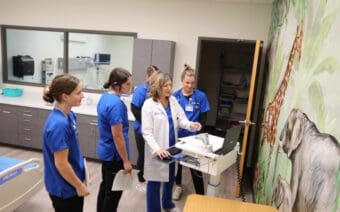
August 11, 2025
When making a purchasing decision, typically paying more equates to better quality.
Consumers choose to shop at higher-end grocery stores, buy luxury vehicles or invest in the latest technology.
When it comes to health care, consumers continue to pay more, but the quality is not following suit.
Harvard Medical School analyzed the mergers and acquisitions of more than 250 hospitals and found that the measurable quality of care – including factors such as mortality rates, readmissions and timely treatment – declined.
The study noted rising hospital prices have been one of the leading drivers of unsustainable growth in healthcare spending.
In fact, healthcare costs account for nearly 20% of economic expenditures in the U.S. (or $4.1 trillion each year).
Wisconsin has the fifth-highest hospital prices in the United States.
For businesses, the competitive hiring landscape adds another challenge – as strong benefit offerings impact their ability to recruit and retain talent.
Businesses are paying for the increasing cost of health care and need to lead the charge.
The reality is that impactful change can start today with employers taking the lead and educating their employees to be better healthcare consumers.
By taking control and being mindful, people can save significantly and contribute to shifts in the healthcare marketplace.
Emergency room visits
Emergency room (ER) visits are expensive – one visit can cost thousands of dollars.
Studies by the Health Care Cost Institute showed that around half of ER visits were not emergent, with some studies showing as few as 10% of cases were classified as emergencies.
Consumers should look for alternatives.
Acute injury clinics and independently owned facilities offer walk-in services that can address the issue faster and cheaper than emergency rooms, while also allowing emergency room staff to focus on critical issues.
Unnecessary tests
Unnecessary tests and procedures significantly contribute to the amount spent on health care, which can occur when providers aren’t familiar with the injury or condition they’re seeing.
Going straight to a specialist can alleviate unnecessary tests and save a patient time.
A common misconception is that insurance carriers require a referral to see a specialist – but in most cases, this is not true.
For example, Orthopedic & Sports Medicine Specialists (OSMS) has an acute walk-in clinic that accepts walk-ins for bone or muscle injuries, which allows people to see an orthopedic doctor immediately with appropriate testing (if required).
Patients can also shop around for testing.
An MRI is one of the biggest examples of a higher-cost test, and these can be done independently of a hospital or system at a much lower cost.
Procedures, surgeries, infusions
Evaluating where procedures, surgeries and infusions are taking place can also save consumers money.
When procedures are done in a clinic setting, it eliminates the facility fee.
Common procedures, like carpal tunnel release, can be performed in a clinic and dramatically reduce costs.
For procedures that do require surgery, independent surgery centers bill at a lower rate than a hospital or system surgery center.
The Ambulatory Surgery Center Association estimates the savings at 30-60%.
Their research also shows a better quality of care with measurements like lower infection rates, lower admission rates post discharge and higher patient satisfaction.
Outpatient infusions for rheumatic conditions, gastrointestinal disorders and more can often be performed outside of a hospital, in turn eliminating some of the fees associated with these ongoing treatments.
The bottom line is shopping around and knowing that you have options can save consumer costs and give them the best quality of care in the long run.
Impactful changes
For businesses, the biggest opportunity is fostering change in employee habits – especially for self-funded insurance.
Educating team members can go a long way in reducing healthcare costs for your business and employees.
If employees know where the largest costs occur and what their options are for reducing those costs, they can play a part in a better healthcare offering for the team, and that money can be reinvested in the company or its people.
Some local businesses that OSMS has partnered with have offered a participation bonus for making better decisions in order to pass along some of the savings to the employee.
In one case, a self-funded employer with multiple locations in Northeast Wisconsin (totaling more than 1,000 employees) provided a participation bonus for choosing cost-saving options, which they regularly communicated with their audience.
Over 4.5 years, they saved more than $1 million.
While not all businesses have the same scale, even more moderate savings can be impactful for smaller businesses.
It’s important for healthcare consumers to find a better way, and businesses and their employees can lead that charge.
Treating health care like other purchases and investing time in research and shopping around can lead to impactful savings for all.
 Shepherding a n-ewe business toward success
Shepherding a n-ewe business toward success Historic charm, contemporary comfort, natural calm
Historic charm, contemporary comfort, natural calm








